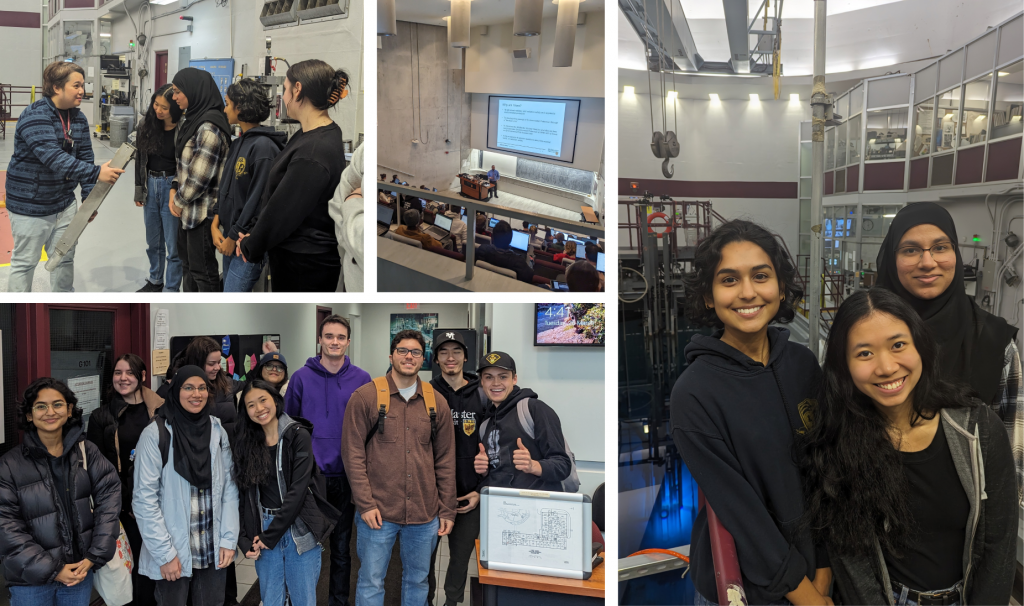Students tour nuclear reactor as part of environmental assessment course

On a tour of the McMaster Nuclear Reactor, students got an overview of its environmental protection and radiation safety programs, which ensure researchers, staff and students are well-equipped to handle radioactive materials safely.
How are nuclear facilities regulated to ensure the health and safety of the environment? What role does radiation safety play in protecting communities and ecosystems? McMaster undergrad students got to ask all their questions on a tour of the McMaster Nuclear Reactor, hosted through ENVIRSC/ENVSOCTY 4EA3 — a course offered by the School of Earth, Environment and Society in the Faculty of Science.
The course provides students with a broad introduction to environmental impact assessments (EIA), with an emphasis on EIAs in Canada at the provincial and federal level.
It explores interdisciplinary connections between the technical aspects of EIAs and their social, cultural and political implications.
With a nuclear research reactor right here on campus, it was the perfect opportunity for students to explore a facility that continually undergoes EIAs, says Assistant Professor Rodrigo Narro Pérez.
“This course aims to broaden students’ understanding of how infrastructure projects that we see in our communities are reviewed and approved to minimize harmful impacts on the natural environment,” he says.
“McMaster is uniquely positioned to introduce students to the importance of nuclear energy – and environmental impact assessments – within the Canadian context, particularly as Canada and the world explore the role small modular reactors can play in achieving net zero.”
McMaster Health Physicist Chris Malcolmson gave students an overview of McMaster’s environmental protection and radiation safety programs, which ensure researchers, staff and students are well-equipped to handle radioactive materials safely.
“The McMaster Nuclear Reactor has operated on campus for over six decades with zero negative impact to the environment. This is thanks to the robust regulations put forward by the Canadian Nuclear Safety Commission (CNSC) and the outstanding safety culture at our nuclear facilities,” Malcomson says.
MNR implements an environment monitoring program overseen by the CNSC, which includes the regular collection and analysis of environmental samples — including air, soil and vegetation — from public areas surrounding the reactor.
Students were asked to compare MNR’s environmental assessment process with others they explored in class. For their final assignment, they contemplated the role that environmental impact assessments could play in small modular reactor deployments.
The tour was a great way to engage the next generation of environmental leaders who may play a role in regulating nuclear facilities of the future, says Erica Dao, Manager of Nuclear Outreach and Education.
“We were delighted to be able to supplement students’ studies with a real-world example of environmental impact assessment,” Dao says.
“It’s important to get students thinking about how nuclear facilities like MNR — which play a powerful role in clean energy, health and materials research — are regulated to ensure the greatest protection and benefit to the environment and society.

